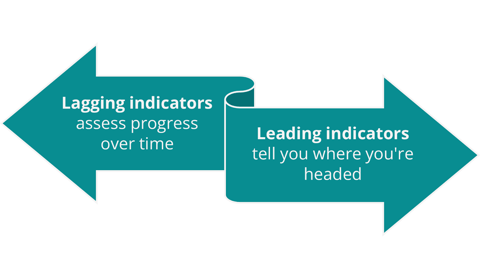%20with%20text%20(1).png)
Are you really listening? Rethinking how we measure speak-up culture.
As compliance leaders, we love our metrics. We dutifully track the number of helpline reports, cases per quarter, and substantiation rates, and proudly present them in neat charts (like this one!) to our leadership. However, while these numbers are useful indicators, they only tell us part of the story. 🤔
Compliance’s standard metrics are known as “lagging indicators”
Think about it. A helpline report tells you about what's already happened. It's a lagging indicator. While it's crucial to know about these issues, relying on lagging indicators exclusively is like being in that group of college kids in a horror movie that decides to stay in a remote cabin because the photos are lovely and it looks so peaceful.
All the past info you have supports this assumption, but you're completely ignoring the freshly snapped branches, veiled warnings from the locals, and the fact that the "funny guy" is missing—all clear leading indicators that the real danger is lurking around the corner.
 Last year’s Yelp review: ⭐⭐⭐⭐⭐| Source: Sam Raimi’s Evil Dead via Giphy.com
Last year’s Yelp review: ⭐⭐⭐⭐⭐| Source: Sam Raimi’s Evil Dead via Giphy.com
Lagging metrics can’t give you the full picture of trust or psychological safety within your organization because a sudden spike in reports could be a good thing (people trust the system!) or a bad thing (uh-oh, big problems are surfacing).
To truly understand what’s going on, you need to keep a pulse on your culture with leading indicators. These are the proactive, snapshot measures that show you where your culture is headed so you course-correct before things go sideways.

Leading indicators to start monitoring now
The “Time to Thank You” 🙏
This is the time between when an employee submits a report and when they receive the first personal acknowledgment. Not an automated email, but a real human being saying, “Thank you for coming forward. We received your report and we're looking into it.” This simple, human touchpoint is a powerful indicator of how much you value the courage it takes to speak up. Tracking and shrinking this timeline shows respect and builds trust.
Pro tip: Download these free templates to communicate with helpline reporters with empathy.
Manager Inquiry Rate 💬
How many questions or consultation requests does your team get from managers? I’m not talking about questions related to an ongoing investigation, but proactive inquiries like, “How do I handle this tricky policy question?” or “Can you help me think through a potential conflict of interest on my team?” or “Can you come to a staff meeting and answer some questions about the investigation process?” A high rate of these inquiries is a golden sign that managers see you as a trusted advisor, not the "compliance police."
Pro tip: See my post on How to shake that "compliance police” rep for ideas on how to make your E&C Program more approachable.
Consultation-to-Investigation Ratio 🔄
Compare the number of proactive consultations and inquiries to the number of formal investigations you open. A healthy ratio (more consultations than investigations) suggests that employees and managers are seeking guidance before a situation becomes a major problem. This is a fantastic indicator of a healthy speak-up culture.
This is how you see around the corner
Leading indicators provide a much richer, truer picture of your organization’s health. They shift the focus from simply reacting to problems to proactively building a culture of trust. Once you have a baseline, you can track and monitor these week to week (or month to month depending on the metric) to spot issues early.
 Now you’re fully prepared | Source: Sam Raimi’s Ash vs. Evil Dead via Giphy.com
Now you’re fully prepared | Source: Sam Raimi’s Ash vs. Evil Dead via Giphy.com
Your homework
Starting on a Monday, pick one of these new metrics to focus on. By Friday afternoon, you’ll have a week’s worth of data to review:
- Do you have a three-day time to thank-you? Make it a goal to get that down to 24 hours by the end of the quarter.
- Is your manager inquiry rate at zero? Bump up those numbers before the end of the year by providing more compliance resources for your managers and telling them how you can support their work.
- Want to flip the number on your consultation-to-investigation ratio? This one's going to take a little more effort to diagnose and turn around, but it’s a robust metric and worth the investment. For now, start a conversation with your HR partner about the compliance-related inquiries they're receiving and come up with a plan to start looping in your team. Over time, as you continue build trust with employees, they'll begin coming directly to you and you'll be able to see the fruits of your labor in real-time.
Finally, get out of the cabin and pay attention to what's all around you. By focusing on improving these numbers, you’re creating an environment where speaking up proactively is the easiest and most natural thing to do.

